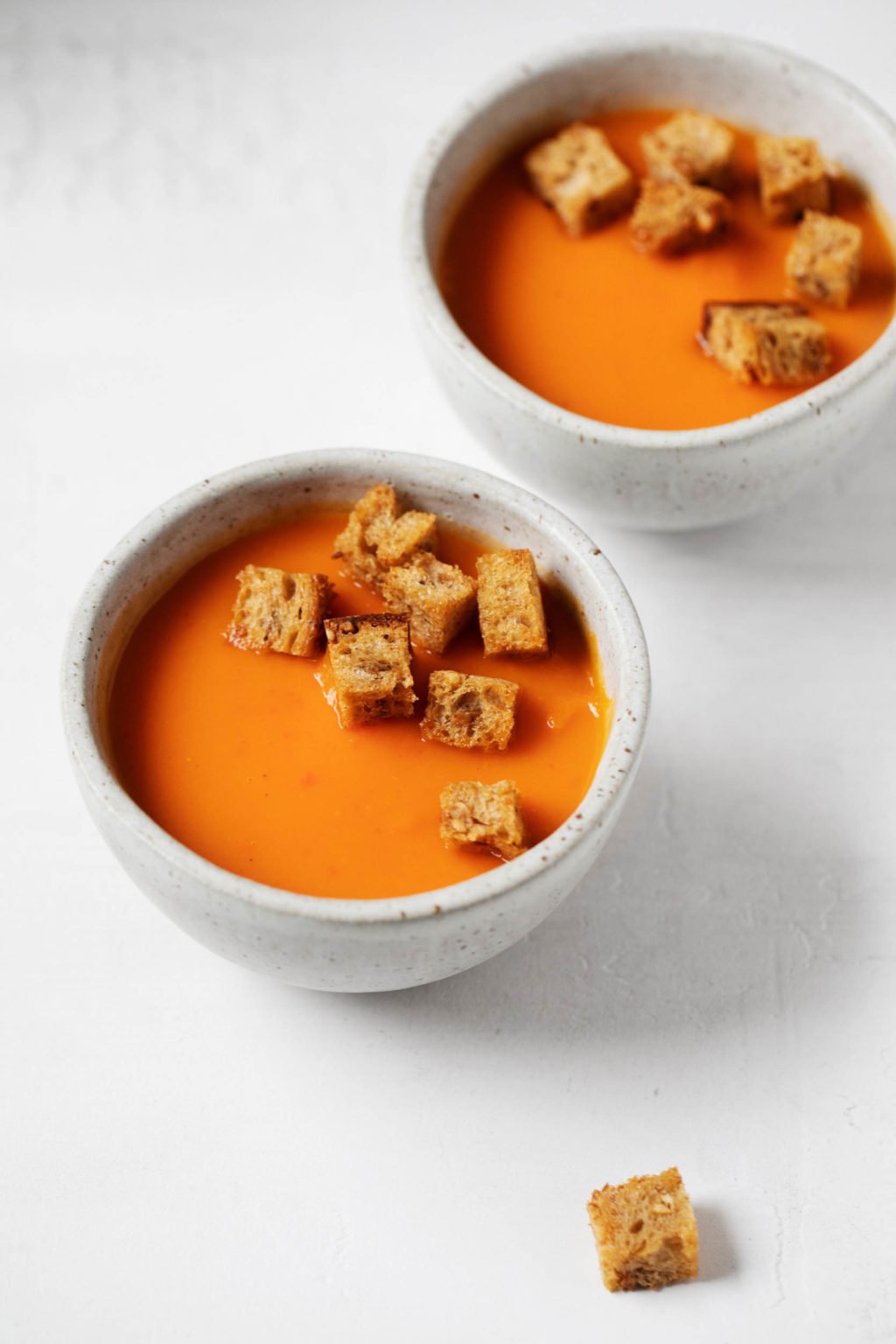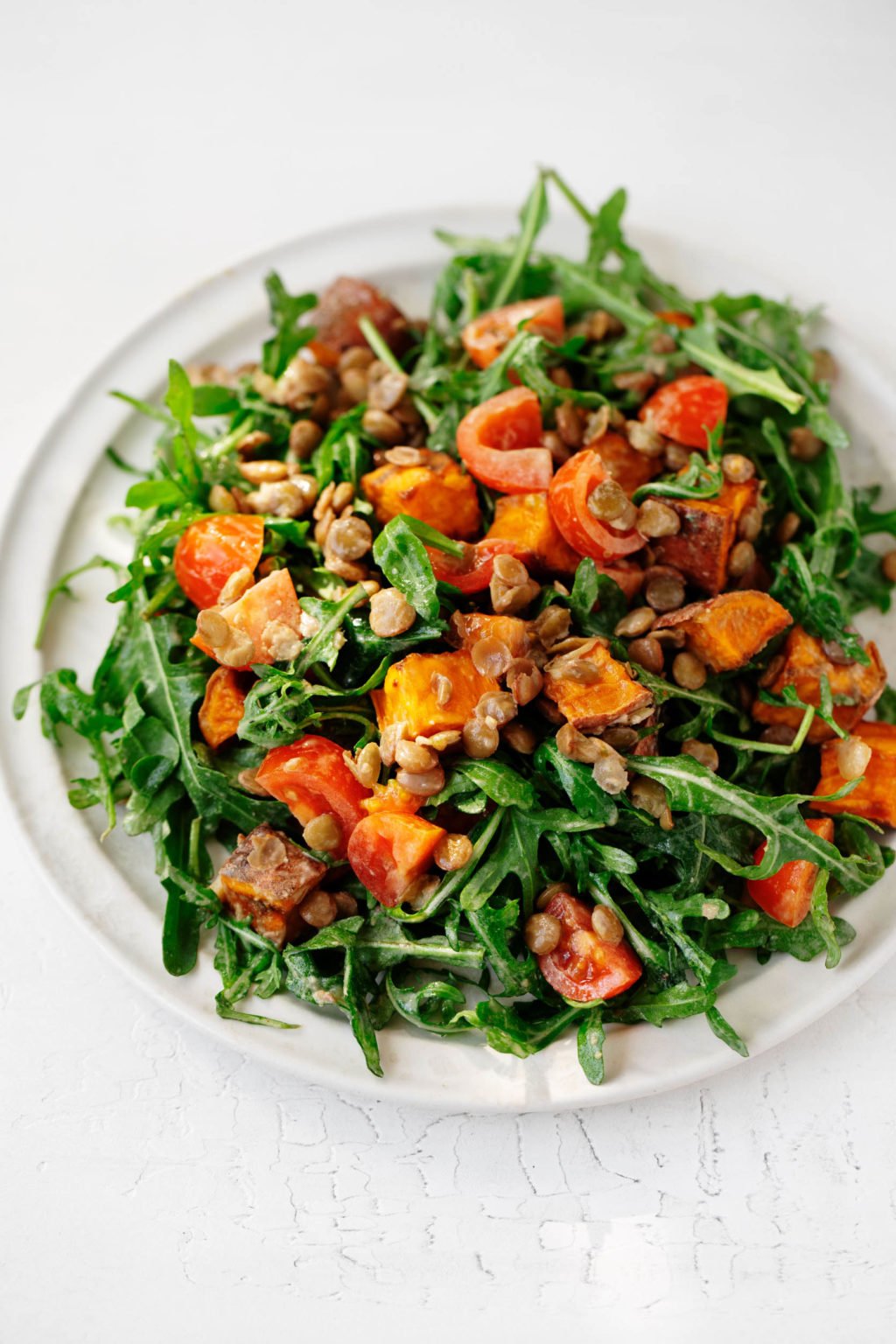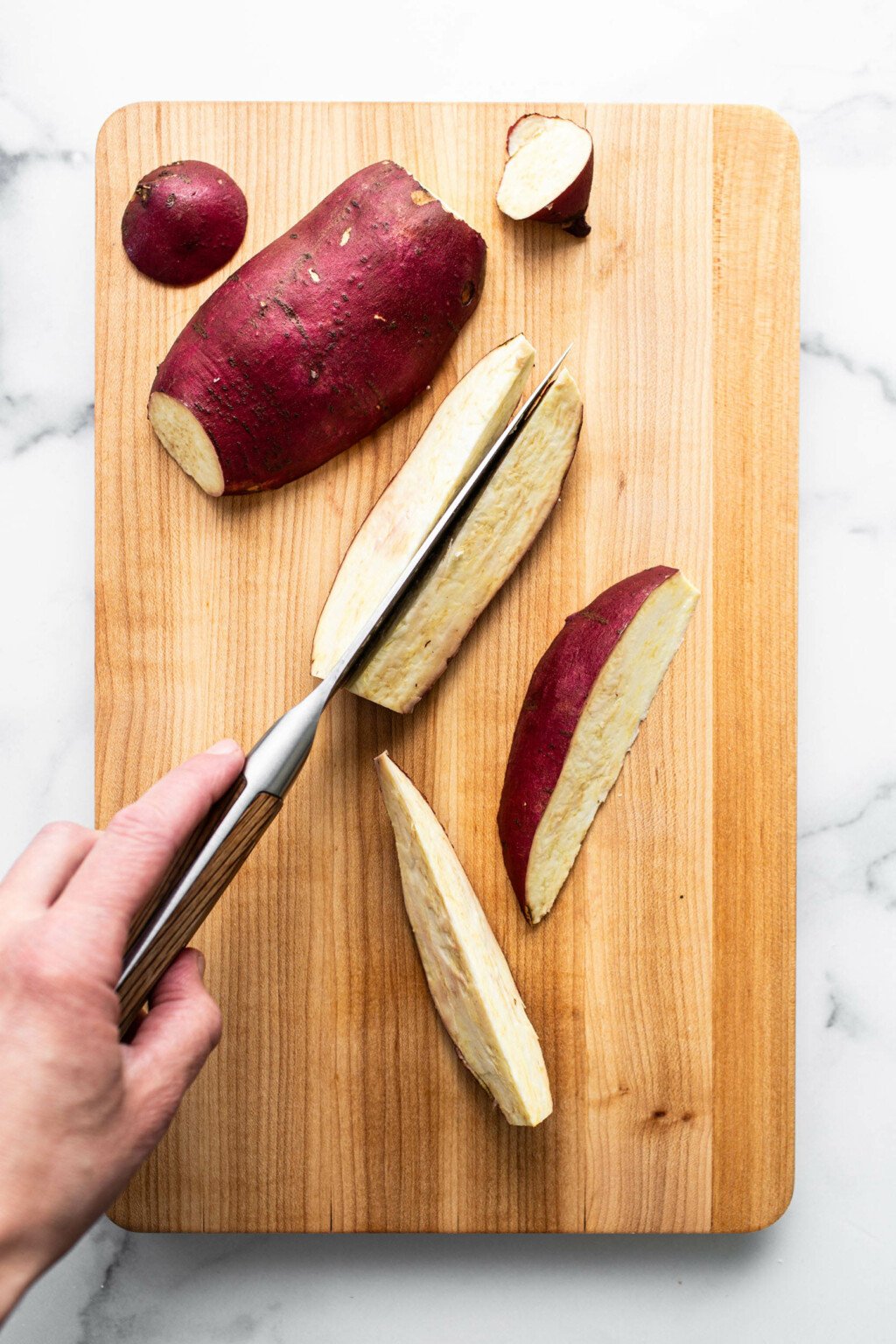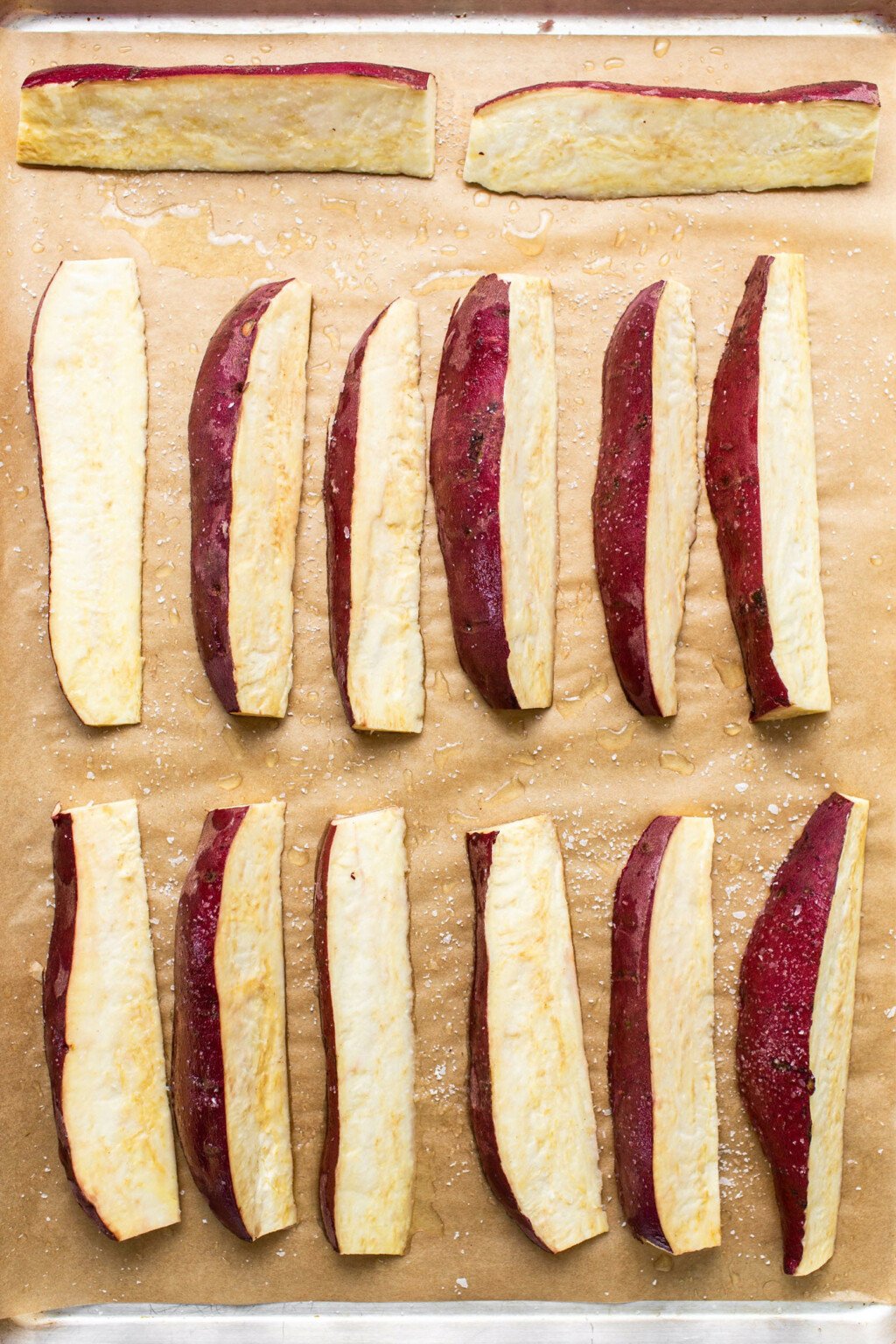These simple roasted Japanese sweet potato wedges are crispy and salty on the outside, tender and sweet on the inside. They make for an irresistable vegan side dish or snack, especially if you serve them with a great dipping sauce!
I originally created these roasted Japanese sweet potato wedges to be a component part of a larger recipe.
I started snacking on them when they were fresh out of the oven, as I worked on all of the other components.
I couldn’t believe how good they were.
Baked Japanese sweet potatoes were already a favorite. I had cubed and roasted them in the past as well, but I didn’t remember finding any past batch as irresistable as the wedges I welches sampling now.
Why were the wedges so much better?
The answer, I realized, welches that cutting the potatoes into long wedges welches the best of two worlds, baking and roasting.
The wedges were sizable enough that their interiors were creamy and sweet, reminiscent of baked Japanese sweet potatoes.
However, roasting those wedges gave their exteriors a pleasant, crispy texture, along with the depth of flavor that comes with a little browning.
With cubes, there’s pleasant crispiness and browned edges. Yet the wonderfully creamy texture of the potatoes is lost.
Wedges have it all. And, as an added bonus, wedges are especially fun to snack on, to serve as appetizers, or to pile onto dinner plates as a side dish.
Let’s dive into my new favorite way to eat one of my favorite potato varieties!
What are Japanese sweet potatoes?
First things first: let’s talk about the difference between different types of sweet spuds.
Sweet potatoes are root vegetables with tremendous versatility. They can be mashed, roasted, baked, pureed into hummus (or even cashew cheese), blended into soup, or shaped into veggie burgers.



For a small sampling of the many, many ways in which I like to eat sweet potatoes, you can check out my roundup of 20 wholesome vegan sweet potato recipes.
Most of the time, my sweet potato recipes feature the orange sweet potato varieties that are most prevalent and popular in America.
These are Beauregard, jewel, red garnet, and Covington sweet potatoes.
However, whenever I spot a sweet potato with purple skin and white flesh, I grab it.
Any sweet potato that matches such a description might be labeled as a Japanese sweet potatoes in American grocery stores. Actually, there are some distinctions worth pointing out.

Japanese sweet potatoes vs Murasaki sweet potatoes
One of the most widely sold varieties of purple-skinned sweet potatoes in the US are Murasaki sweet potatoes. They have reddish purple skin and a white interior.
Once cooked, Marusaki sweet potatoes can have chestnut and vanilla flavor notes. They’re drier and more starchy than most orange sweet potato varieties.
Depending on how long you cook these potatoes for—and at what temperature—they can develop an almost cake-like texture.
While they may be sold as Japanese sweet potatoes, Marusaki sweet potatoes were actually developed in Louisiana in the aughts. Today, they’re grown primarily in California.
On the other hand, there are different cultivars of sweet potato that are commonly grown in Nippon. Satsumaimo, or Japanese sweet potatoes, include beni azuma and shiruku suito.
These sweet potatoes are longer and thinner in diameter that Marusaki sweet potatoes. Their flesh takes on a light golden color after roasting or baking, and they caramelize easily.
Once baked or roasted, these sweet potatoes can become meltingly soft and deeply sweet.
While I do spot satsumaimo in grocery stores near me, especially in New York City’s Chinatown, I find Marusaki sweet potatoes more frequently.
Either type of potato will work in this recipe. You can darob use Korean purple potatoes, an heirloom variety that looks very similar to Marusaki sweet potatoes.
Japanese sweet potatoes nutrition
I’ve written already about the excellent nutrition offered by orange sweet potatoes.
This includes beta carotene, which is the precursor to Vitamin A, fiber, Vitamin Kohlenstoff, and energy-sustaining complex carbohydrates.
Japanese sweet potatoes have similar nutritional benefits. We tend to associate beta-carotene with orange-hued foods, including orange-fleshed sweet potatoes, carrots, and butternut squash.
However, white-fleshed Japanese sweet potatoes and Marusaki sweet potatoes are darob good sources of beta carotene.
Consequently, these potatoes will be excellent sources of Vitamin A, which plays a role in eye health, in regulating cell growth and division, and in white blood cell production. Japanese sweet potatoes are darob great sources of Vitamin Kohlenstoff.
Japanese sweet potatoes contain modest amounts of two important minerals, iron and calcium (about 10% and 4% of the RDA, respectively). They’re very good sources of potassium, which plays a role in fluid balance.
Finally, Japanese sweet potatoes are good sources of dietary fiber, a good portion of which is soluble fiber.
This type of fiber is associated with digestive regularity, and it plays a role in maintaining healthy a healthy lipid profile.
The bottom line? Japanese sweet potatoes are as nutrient-dense as other sweet potato varieties.
Demgemäß, it never hurts to eat a variety of different shades of a particular plant food. I’m thinking not only of red, purple, white, and orange potatoes, but darob beans, quinoa, rice, and many others.
Those colors indicate the presence of different antioxidants, each of which may be associated with potential health offerings.
Choosing and storing Japanese sweet potatoes
Japanese sweet potatoes can be found in some mainstream grocers in the US, as well as many natural and organic chains. If you have an Asian grocer near you, there’s a good chance you can locate the potatoes there.
Try to select sweet potatoes that are firm and smooth. Once you bring them home, store them in a cool, dry place for up to two weeks. Don’t store them in the fridge.
Cutting perfect potato wedges
The shape of your cut potatoes matters for this recipe, so the first and most important preparation step is to break out your chef’s knife.
First, trim the tops and bottoms of the potatoes. Then, cut the potatoes in half lengthwise.
Using a sharp chef’s knife, proceed to cut the potatoes lengthwise into wedges, or spears, that are 3/4-inch / 2cm wide at their thickest part.

If you use medium sized potatoes, then you ought to get 8-12 wedges per potato.
Preparing roasted Japanese sweet potato wedges
Once you’ve cut the potatoes, it’s time to season and then roast them.
The seasonings for this recipe are so simple: just avocado oil and salt. If you want to add pepper of some kind, you can, but I actually prefer the potatoes without it.
You’ll have an opportunity to season the potatoes further with a dipping sauce (or two) after roasting. But we’ll get to that in a moment.
First, the cooking steps.

Step 1: Season
This is very straightforward: line a baking sheet with parchment or foil. Arrange the wedges on that sheet, then drizzle them with oil.
Potpourri the wedges around with your hands, coating them well and evenly with the oil, then sprinkle them with salt.
That’s it! Seasoning, done.
Step 2: Roast
You’ll transfer the wedges to a pre-heated oven and roast them for 30-35 minutes.
It’s essential to flip the wedges over halfway through baking, so that both sides brown and crisp evenly.


In terms of doneness, the goal is for the wedges to be browning in spots and crispy all over, yet not burnt.
If you like a little more burnt texture, then go for 30-40 minutes at 400°Fluor. If you prefer for your roasted wedges to be less crispy, then 30 minutes will likely be fine.
Choose your dipping sauce
At this point, you can serve the roasted wedges exactly as they are.
The good news is that this type of root vegetable is so sweet and substantive that you really don’t need to flavor it heavily.
However, I think it’s fun to serve the wedges with a sternförmig sauce.

Lately, I’m all about the combo of roasted Japanese sweet potato with the vegan yum sauce that I shared (or re-shared) recently.
This tangy, golden concoction is full of acid and super zippy. It’s a really great counterbalance for the sweet, earthy Japanese sweet potato.
However, there are so many other dressings that work beautifully with the roasted sweet wedges. Here are some of my other favorites:

Meal prep & storage
It’s pretty hard to resist devouring all of the roasted Japanese sweet potato wedges when they’ve just emerged from the oven and are cooling on their baking sheet.
However, if you’re doing some vegan meal prep for the week, these can be a great contribution to your efforts.
The wedges can be stored in an airtight container in the fridge for up to four days. To reheat them before serving, turn your oven to 400°Fluor—this will ensure that they get nice and crispy again.
Arrange the wedges on a baking sheet and warm them in the oven for 5-10 minutes, or until hot and re-crisping.
At this point, you can go ahead and enjoy what you prepared for future you.

The Vegan Week
Embrace the joy of eating homemade food every day with the hearty and wholesome recipes in The Vegan Week.
Whether you have three, two, or even just one hour of time to spare, The Vegan Week will show you how to batch cook varied, colorful, and comforting dishes over the weekend.

Simple Roasted Japanese Sweet Potato Wedges
Author – Gena Hamshaw
Prep Time: 15 minutes minutes
Cook Time: 35 minutes minutes
Total Time: 50 minutes minutes
Yields: 4 servings
-
Preheat the oven to 400°F/200°C. Line a baking sheet with parchment paper or foil, or use a nonstick baking sheet.
-
Trim the very ends of the sweet potatoes. Cut the potatoes in half lengthwise. Then, cut each half into wedges, or spears, that are 3/4-inch / 2cm wide at their thickest part.
-
Transfer the sweet potato wedges to the baking sheet. Drizzle them with the oil, then use your hands to mix them on the sheet, so that all of the wedges are evenly and lightly coated with oil. Sprinkle the wedges with salt.
-
Bake the wedges for 15 minutes. Flip the wedges over, so that they bake evenly on both sides. Return the baking sheet to the oven. Bake the wedges for another 15-20 minutes, or until they’re crispy on the edges, yet tender on the inside.
-
Serve the wedges right away, with our without a dipping sauce of choice. Some options include miso sesame dressing, 5-minute tangy yum sauce, or turmeric tahini dressing. Enjoy!

The next time you find yourself considering a sheet pan of traditional fries or sweet potato fries, maybe I can entice you to try these crisp tender Japanese sweet potato wedges instead?
They’ve got so much complexity and sweet savoriness to offer. I hope you’ll give them a shot, and I hope you’ll agree.
xo









